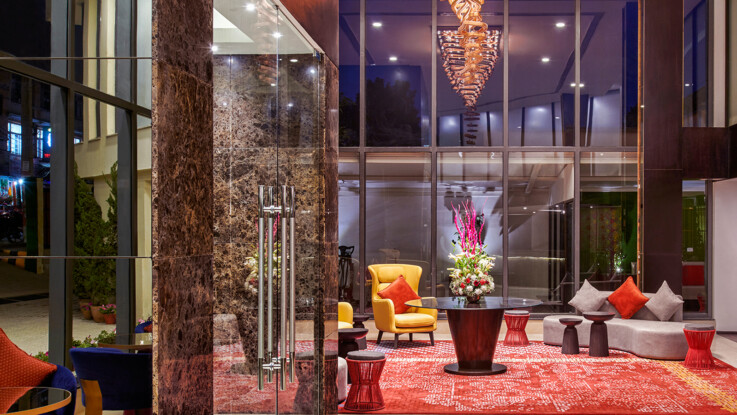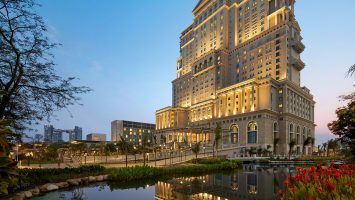
The hospitality sector is undergoing a significant transition by incorporating sustainability and art into its design ethos in a time when environmental consciousness is of the utmost importance. The fusion of these two fields not only encourages environmentally good behaviour but also sparks innovation and creativity, creating visually appealing and environmentally conscious hospitality settings.
“To create a seamless connection with nature, hotels are implementing natural elements like interior gardens, living walls, and cascading water features. In Rishikesh, for instance, the Hideaway Bedz incorporates nature into its urban construction, giving visitors a tranquil and restorative experience amidst the busy metropolis.” says Sonia Arora Sood, Founder and Creative Director of Karabi Art Community.
Integrating local art to promote community involvement and cultural sustainability
Many lodging facilities are featuring indigenous artwork and working with regional craftspeople in an effort to support local artists and promote local culture. Hotels that use locally made sculptures, paintings, and installations not only encourage community involvement but also lessen their carbon impact by requiring less art to be transported over vast distances. The Taj in Chennai and Fairfield by Marriott in Lucknow both proudly display well curated collections of regional artworks and antique furnishings that immerse visitors in the unique cultural heritage of the city while supporting sustainable artistic practices.
Reusing and Upcycling: Turning waste into creative Marvels
The hospitality sector has embraced the upcycling and repurposing movement, which enables designers to create distinctive and eye-catching interiors with minimal environmental effect. Hotels are creating custom furniture and decorative components out of salvaged resources including reclaimed wood, old furniture, and recycled metals. Reclaimed driftwood and salvaged materials are used to create an aesthetic ambiance at The Fairfield by Marriott in Bangalore, which serves as an example of this trend and emphasises the hotel’s dedication to sustainable practices.
Sustainable business practices and guest engagement
During their stay, guests are actively encouraged to take part in eco-friendly activities by hospitality facilities that actively engage them in sustainable practices. Hotels are implementing trash reduction plans, water and energy conservation initiatives, and sustainable dining alternatives to encourage visitors to help protect the environment. The Vivanta in Kathmandu, Nepal, encourages guests to be conscious of their environmental impact by promoting a heart-pleasing atmosphere.
An innovative strategy that not only improves the aesthetic appeal of hotels and resorts but also helps to preserve our planet is the fusion of sustainability and art in hospitality design. The hospitality sector is setting the way for a greener and more visually pleasing future by adopting biophilic design, supporting regional art scenes, introducing sustainable lighting solutions, involving visitors in eco-friendly activities, and more. This seamless fusion of sustainability and art is redefining the field of hospitality design and establishing a new benchmark for ecologically sound and aesthetically pleasing spaces everywhere.





Leave a Reply